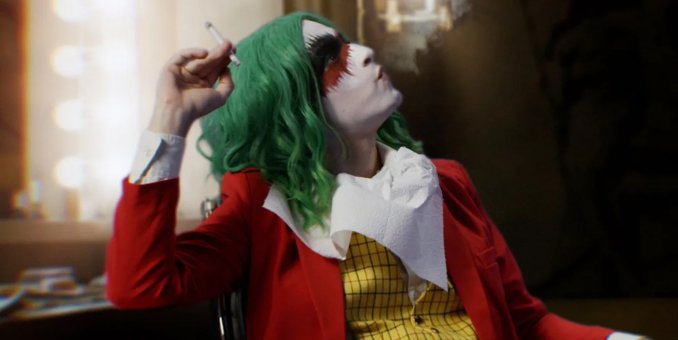
Every year it is a task to winnow down the year’s best to a simple list of ten, twelve or some other arbitrary number. And at this level of quality, trying to quantify each film becomes problematic in that one can be often trying to judge unalike things against each other. Can a film that is only one part of a multi-part story be considered by itself? Can you judge an outsider indie film made for less than a million dollars next to a giant studio blockbuster made for two hundred times that amount? But all of these movies are on this list for succeeding in how they go about their stories on their own terms, not how they do so compared to another film that goes about it in a different way.
One thing I did discover when creating this year’s look back at the best films of the past twelve months was that a few of them dealt with similar themes in such a way that they almost seemed to be in conversation with each other. These three pairs I’ve placed at the top of the list and listed the rest of the year’s top films alphabetically. All are worth your time and attention. Enjoy.
The Brutalist/ Megalopolis

Architecture is an unusual discipline, one part mathematical engineering and one part creative artistry, all with the intent of not just making something for the present but imposing itself into the future. And the protagonist in both The Brutalist and Megalopolis are architects who are using their skills in the field to work their way through personal trauma. Granted The Brutalist does so in a gritty post World War Two story about a Jewish immigrant to America while Megalopolis does so in the context of an alternate history that recasts the fall of the Roman Empire onto an ersatz modern day Manhattan. Two wildly different stories told in markedly different ways but still somewhat two sides of the same thematic coin.
September 5/ Saturday Night

The frenzied last minutes before the launch of a late night comedy show and the tense twenty-four hours of coverage of a horrific terrorist attack may seem like rather incongruous things to pair. But both of these events, taking place just a few years from each other, represent bellweather changes in American culture in what and how we consume news and entertainment. Lorne Michaels and Roone Arledge both face opposition from their networks as they try to articulate and bring to the airwaves something never done in quite their ways before. Strong ensemble casts in each film help us relive these moments in their individual pressure cookers
The Substance/ The Last Showgirl

A double barreled shotgun blast, The Substance and The Last Showgirl takes aim at the entertainment industry’s, and by extension culture in general, commodification of women’s looks and how disposable they can be made to feel once they reach a certain age. While this is not necessarily a new them in cinema – it underlies a number of films at least back to 1950’s All About Eve – but these approach the topic from two differing angles. In The Substance, Demi Moore is literally betrayed by her body as she dreams of regaining her youth, while Pam Anderson in Last Showgirl struggles with the emotional fallout of her dream career suddenly crashing to an end. Both actresses give strong performances which sadly may be drawn from their own experiences.
A Real Pain

What starts off as a charming buddy comedy about two cousins traveling through Poland evolves into an examination of grief and regret in writer/director/co-star Jesse Eisenberg’s sophomore directorial effort. Eisenberg stars alongside Kieran Culkin as cousin who grew-up together before adulthood set them on different paths, now reunited on a trip to the small Polish town their recently deceased, beloved grandmother was born. As their extended time together starts to highlight their differences, the two struggle to find their own ways to grieve their grandmother. Culkin gives one of the best performances of the year as the cousin who hides their sadness behind a mask of joi de vie.
Dune Part Two

Frank Herbert’s seminal 1964 science-fiction novel Dune was long thought to be unfilmable. And David Lynch’s 1984 attempt did not do much to dissuade anyone of that notion. But Dennis Villanueva, who cut his teeth on thoughtful sci-fi cinema such as Arrival and Blade Runner 2049, proved that given enough time – in this case two movies running a total of nearly five and a half hours – the book’s complex story of political machinations, religious revolution and the coming of age of a potential messiah could be told as faithfully as possible. Dune Part One (2021) may have leaned more towards setting up much of the story, but Part Two pays everything off, while never losing sight of the characters within the spectacle of galactic revolution.
Memoir Of A Snail

It has been a particularly good year for animated features with films like Inside Out 2, The Wild Robot, Flow, Look Back and Robot Dreams all capturing audience and critics’ attentions. But perhaps the best of this crop is the Australian entry, Memoir Of A Snail. The story of a girl whose life is shattered after her parents die and she is separated from her brother, the film is a heartbreaking and emotionally complex coming of age story about dealing with loneliness and the fragility of happiness.
Nosferatu

Robert Eggers has been building a much deserved as a true master of horror filmmaking, wielding tone and mise en scene to create some of the most artistic and chilling cinematic visions. Here, Eggers turns to F. W. Murnau’s silent classic vampire film, delivering a period drama drenched in atmosphere and sensuality. Lily-Rose Depp and Nicholas Hoult turn in career best performances as a young couple haunted and torn apart by the monstrous Count Orlok (Bill Skarsgård), though Willem Dafoe almost steals the show as the professor with one foot in the scientific world and the other in the occult who brings the knowledge necessary to rid the world of the mostrous vampyre.
The People’s Joker

This debut from director Vera Drew is both an explosion of creative satirical outsider art and deeply personal trans coming out story all using imagery and tropes from the current comic book film wave. The film premiered at the Toronto Film festival in the fall of 2022, but after its initial screening, Warner Brothers’ lawyers began circling, forcing the film to go officially* unreleased for almost 18 months. Shooting almost entirely against green-screens to create a stylized Gotham City backdrop, Drew manages to deftly balance the personal story and the broad satirical swipes at the entertainment industry in a way that leaves us anticipating what will come next from the director. It certainly is by far the better of the two films released this year to feature a version of the Batman’s iconic foe.
* Though there were still a few secret screenings around the country in 2023.
Strange Darling

A solid throwback to exploitation thrillers of the 1970s, writer/director JT Mollner’s sophomore film opens with an unnamed woman (Willa Fitzgerald) being pursued by an angry and gun-toting Kyle Gallner (Smallville), ultimately finding somewhat temporary shelter wit an aging doomsday prepper couple (Barbara Hershey and Ed Begley Jr.). Just don’t expect that the way things appear in these opening moments are the whole story. Mollner’s film unfolds in six chapters, presented in a non-linear order that serves to repeatedly subvert what the audience is led to believe in each preceding chapter. But the screenplay’s structure is more than a gimmick, it is absolutely vital to the film’s effectiveness. And it’s the stellar performances from the film’s four main players that keep us engaged beyond the script’s twisty mechanics. A truly overlooked gem this past year.
Super/Man: The Christopher Reeve Story

The 1995 horse-riding accident that left actor Christopher Reeve a quadriplegic could have led many to shut themselves away from the world, locked in a prison of self-pity. Reeve was not one of those people. He viewed his circumstances not as a setback, but as an opportunity to go and help others who were in similar situations, advocating for better funding and understanding for people with life-altering paralysis. At turns heartbreaking and triumphant, but always inspirational, documentary directors Ian Bonhôte and Peter Ettedgui give us a look at a man whose own very human heroism in the face of great adversity exceeded even that of the iconic superhero he played on the big screen.
Wicked Part One

When it was announced that the first part of director Jon M. Chu’s two-film adaptation of the hit Broadway musical Wicked would have a runtime approximately the same length as the entire stage version, there was some consternation. Sure, the film expands a bit on some of the musical numbers and imports a few things from the novel which served as the basis for the show, but Chu manages to keep a light touch on the material and the film never buckles under the weight of its runtime. What we do get is a magical, energetic musical that pushes the boundaries of the Broadway stage show while simultaneously deeper exploring the relationship between its two leads – a pair of young witches attending a magical university in the land of Oz. And with the film culminating with the showstopping “Defying Gravity,” it certainly doesn’t feel like half a movie either.




